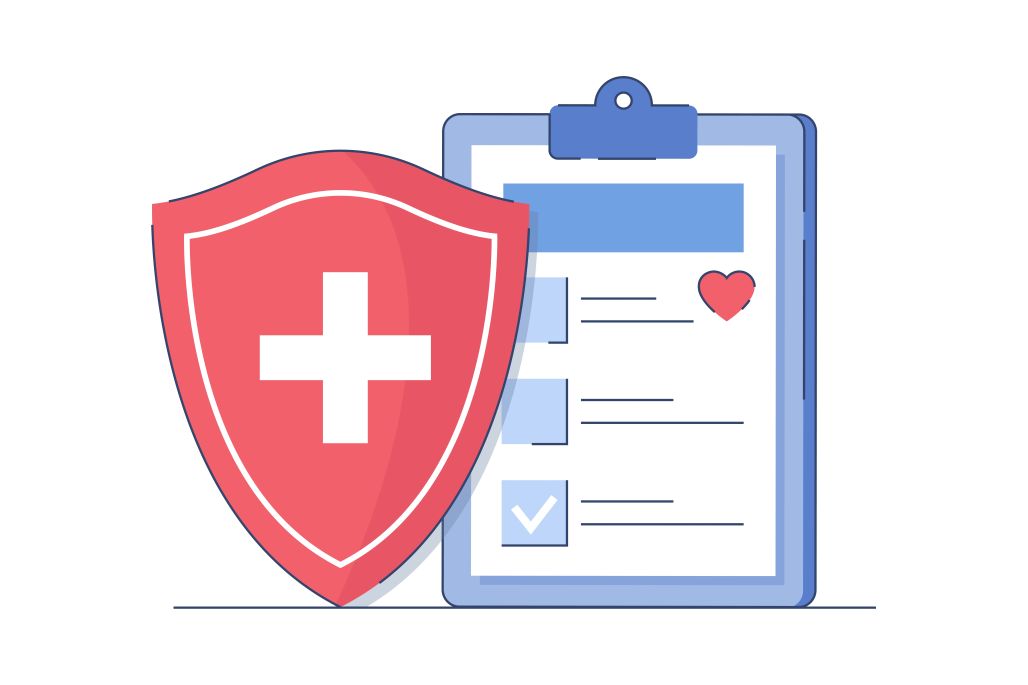Ensuring insurance compliance is more than just ticking boxes—it’s a critical safeguard for your organization, clients, and reputation. Yet many insurers, brokers, and agents stumble on avoidable mistakes that can lead to regulatory penalties, operational inefficiencies, or even reputational damage. In a rapidly evolving regulatory landscape, staying ahead of compliance requirements demands more than traditional training methods; it requires intelligent, dynamic, and tailored learning solutions.
This is where Calibr’s AI-powered training platforms come in. With tools like Calibr Learn, Calibr Craft, and Calibr Content Hub, insurers can deliver personalized, up-to-date, and engaging compliance training that meets both industry-specific and broader financial service regulations. From AI-driven course authoring and mobile-accessible microlearning to real-time analytics , Calibr empowers your workforce to not just complete training—but retain knowledge, apply it in real situations, and proactively manage compliance risks.
Whether you’re onboarding new staff, refreshing existing teams, or rolling out new regulatory modules, Calibr’s solutions make it easy to scale training across teams, roles, and regions while ensuring consistency and effectiveness. Explore how Calibr can transform your compliance programs today or contact our experts to design a training strategy that reduces risk, boosts engagement, and turns compliance from a mandatory task into a competitive advantage.

What is Insurance Compliance?
It encompasses the rules, regulations, and standards that insurance companies, brokers, and agents must adhere to in order to operate legally and ethically. This includes compliance with local, state, and national regulations covering areas such as:
Licensing: Ensuring all necessary licenses are obtained and maintained.
Consumer Protection: Safeguarding the rights and interests of policyholders.
Data Privacy: Protecting sensitive customer information.
Anti-Money Laundering (AML): Preventing financial crimes and fraud.
Financial Reporting: Maintaining transparency and accuracy in financial disclosures.
Compliance is crucial for maintaining the integrity of the insurance industry, preventing fraud, and ensuring fair treatment of policyholders.
Need for Compliance in the Insurance Sector
Compliance is vital for several reasons:
Regulatory Adherence: Avoids penalties, fines, or legal actions from regulators.
Risk Mitigation: Reduces operational, financial, and reputational risks.
Consumer Trust: Ensures clients are treated fairly and their sensitive data is protected.
Operational Efficiency: Streamlines processes and ensures consistency across teams.
Industry Credibility: Demonstrates commitment to ethical practices and enhances brand reputation.
To further emphasize the importance consider the following statistics:
Regulatory Changes: In 2024, U.S. states issued over 3,300 regulatory updates, highlighting the dynamic nature of insurance regulations and the need for continuous compliance efforts. RegEd.com
Consumer Confidence: A survey by Gallagher found that 80% of U.S. business owners are concerned that their insurance may not cover specific losses, underscoring the importance of clear and comprehensive compliance in policy offerings. Reuters
5 Common Compliance Mistakes in Insurance Sector

Failure to Maintain Accurate Training Records
Insurance regulators expect firms to demonstrate that staff have undergone required compliance training. Unfortunately, disorganized records or incomplete documentation can raise red flags during audits. Missing files, outdated certificates, or inconsistent reporting can not only lead to penalties but also create the impression that compliance is not being taken seriously. In an industry where trust is everything, even small recordkeeping gaps can result in significant reputational damage.Regular insurance compliance training can prevent these issues before they escalate into costly violations.
How to avoid it: Use a centralized system where every compliance course completion, assessment, and certificate is tracked in real time. Platforms such as Calibr Learn offer real-time analytics to track progress, measure engagement, and demonstrate ROI. With features like AI-powered course authoring, training modules can be continuously updated and recorded—ensuring your compliance records are always complete, accurate, and audit-ready.
Outdated or Irrelevant Training Content
Static, one-size-fits-all training that hasn’t been updated can leave staff unprepared for evolving regulatory requirements. In insurance, where rules shift frequently, this risk is especially acute. Outdated training may result in employees unknowingly violating new laws, failing to recognize fraud risks, or mishandling sensitive customer data. Regulators increasingly expect training content to reflect the latest policies and industry standards, making outdated materials a direct liability.
How to avoid it: Adopt a content management solution like Calibr Craft, which enables frequent updates, version control, and tailored course creation. A robust Calibr Content Hub ensures that every employee learns from current, accurate, and relevant materials—whether related to anti-money laundering rules, product disclosures, or licensing requirements. By refreshing training regularly, you not only protect compliance but also demonstrate to regulators and clients that you’re committed to best practices.
Lack of Personalized Learning Paths
Generic training often misses the mark. A new claims adjuster and a senior underwriter have very different knowledge gaps, yet many organizations still use the same modules for everyone. This approach often leads to disengagement, wasted time, and uneven understanding across teams. Worse, employees may check boxes without absorbing what’s most relevant to their responsibilities—leaving dangerous blind spots in compliance.
How to avoid it: Deploy personalized learning paths, where training adapts to a user’s role, experience, and prior knowledge. Calibr’s AI-powered learning makes this possible with intelligent recommendations that guide learners toward the content they need most. This ensures employees don’t just complete training—they develop mastery in areas that directly impact compliance in their day-to-day work. Personalized training also boosts motivation, because learners feel the material is directly relevant to them.
Poor Engagement and Low Completion Rates
If training feels boring, irrelevant, or overly long, staff may skip it—or forget what they learned soon after completion. Low engagement can result in incomplete compliance coverage, leaving firms exposed when regulators request proof of staff readiness. Traditional lecture-style courses often fail to hold attention, especially for busy agents and brokers who juggle multiple priorities. The result is wasted resources and lingering compliance risks.
How to avoid it: Inject interactivity and excitement into your compliance modules. Calibr’s microlearning breaks down complex topics into short, digestible lessons, while gamification introduces points, badges, and leaderboards to spark healthy competition. With Calibr’s mobile learning, employees can access training anytime, anywhere—including offline—making it easy for field staff to complete modules on the go. By blending convenience with engagement, insurers see higher completion rates, better retention, and ultimately stronger compliance outcomes.
Neglecting to Measure Outcomes
Completing courses isn’t enough; you need to know whether training is truly effective. Too often, firms focus on “seat time” or course completions rather than whether employees actually understand and apply the content. Without measuring knowledge retention and real-world performance, training gaps remain hidden until violations, fines, or customer complaints surface. This reactive approach is costly, both financially and reputationally.
How to avoid it: Build in assessment and certification mechanisms to validate employee competence. Layer this with Calibr’s real-time analytics, which give compliance leaders insight into completion rates, engagement levels, and weak areas. These insights allow organizations to refine training proactively, address knowledge gaps quickly, and demonstrate measurable ROI. By focusing on outcomes rather than just completions, insurers can transform compliance training into a true risk management strategy.
Compliance Check & Compliance Issues
Insurance companies often face recurring compliance issues, ranging from inaccurate reporting to missed audit requirements. Conducting a periodic compliance check ensures your organization remains aligned with industry and regulatory standards. Regular compliance checks—audits, spot tests, or refresher quizzes—help organizations catch problems early. Addressing compliance issues doesn’t begin after a violation; it starts with proactive monitoring. Running a quarterly compliance check helps teams identify weak spots before audits occur. With Calibr’s collaborative learning, teams can discuss gray areas and real-world scenarios, strengthening the practical application of regulations. Proactive checks also demonstrate to regulators that compliance is embedded in company culture rather than treated as an afterthought.
When issues are identified early, corrective training can be deployed immediately, reducing risk and reinforcing accountability across the workforce. Beyond internal benefits, regular compliance monitoring also boosts customer confidence, showing that the organization takes regulatory obligations seriously. Incorporating periodic knowledge assessments, scenario-based simulations, and peer reviews ensures that compliance remains dynamic, relevant, and actionable—not just theoretical.
Thus, regular compliance check initiatives reinforce accountability across all teams. and by resolving compliance issues early, insurers minimize risk and ensure continuous improvement in their regulatory frameworks.
Financial Service Compliance & Insurance Compliance Training
Insurance compliance falls under the broader umbrella of financial service compliance, which includes strict regulations on data protection, ethics, anti-fraud measures, and risk management. Your insurance compliance training should align with both sector-specific rules and universal standards, ensuring employees understand their responsibilities at every level. Calibr Learn supports multi-language and globally accessible training, enabling consistent delivery for multinational teams.
Comprehensive insurance compliance training ensures every employee understands evolving obligations, from data protection to licensing. By designing programs that address both industry-wide and insurance-specific regulations, insurers not only meet current obligations but also create scalable frameworks capable of accommodating future regulatory changes. This integrated approach reduces duplication, ensures clarity for employees, and fosters a culture of continuous learning. Moreover, combining compliance training with analytics, assessments, and scenario-based exercises helps organizations measure effectiveness, identify gaps, and adjust strategies proactively—so compliance becomes a competitive advantage rather than just a mandate.
Building a Stronger Compliance Future
Avoiding common mistakes in insurance compliance—such as poor recordkeeping, outdated training, generic learning paths, disengagement, and lack of measurement—requires more than good intentions.It calls for structured, modern, and proactive strategies that align with evolving regulatory demands.In today’s financial landscape, financial service compliance plays a crucial role in aligning insurance operations with global standards. Modern insurance compliance training programs must be agile and data-driven to adapt to changing regulations. Platforms like Calibr make it easier to deliver compliance training that is adaptive, engaging, and measurable. It equips insurers with the tools to strengthen compliance frameworks and prove readiness at every audit. And because these solutions support industries from financial services and healthcare to retail, manufacturing, and beyond, they’re built to scale with your business.
Boost Your Insurance Compliance Program
Ready to transform compliance from a regulatory burden into a true business advantage? With Calibr Learn, you can build a culture of compliance through AI-driven personalization, gamification, and collaborative learning. Whether you’re onboarding new agents, rolling out refresher programs, or upskilling experienced staff, Calibr ensures your workforce stays compliant, confident, and engaged.Ongoing insurance compliance training strengthens your team’s awareness and preparedness for any audit or policy change.
Take the next step today: Explore how Calibr Learn can help your organization stay ahead of compliance challenges—and turn risk management into long-term resilience. Contact us or schedule a demo to get started
By integrating financial service compliance principles, organizations can ensure consistency and transparency across all departments.


